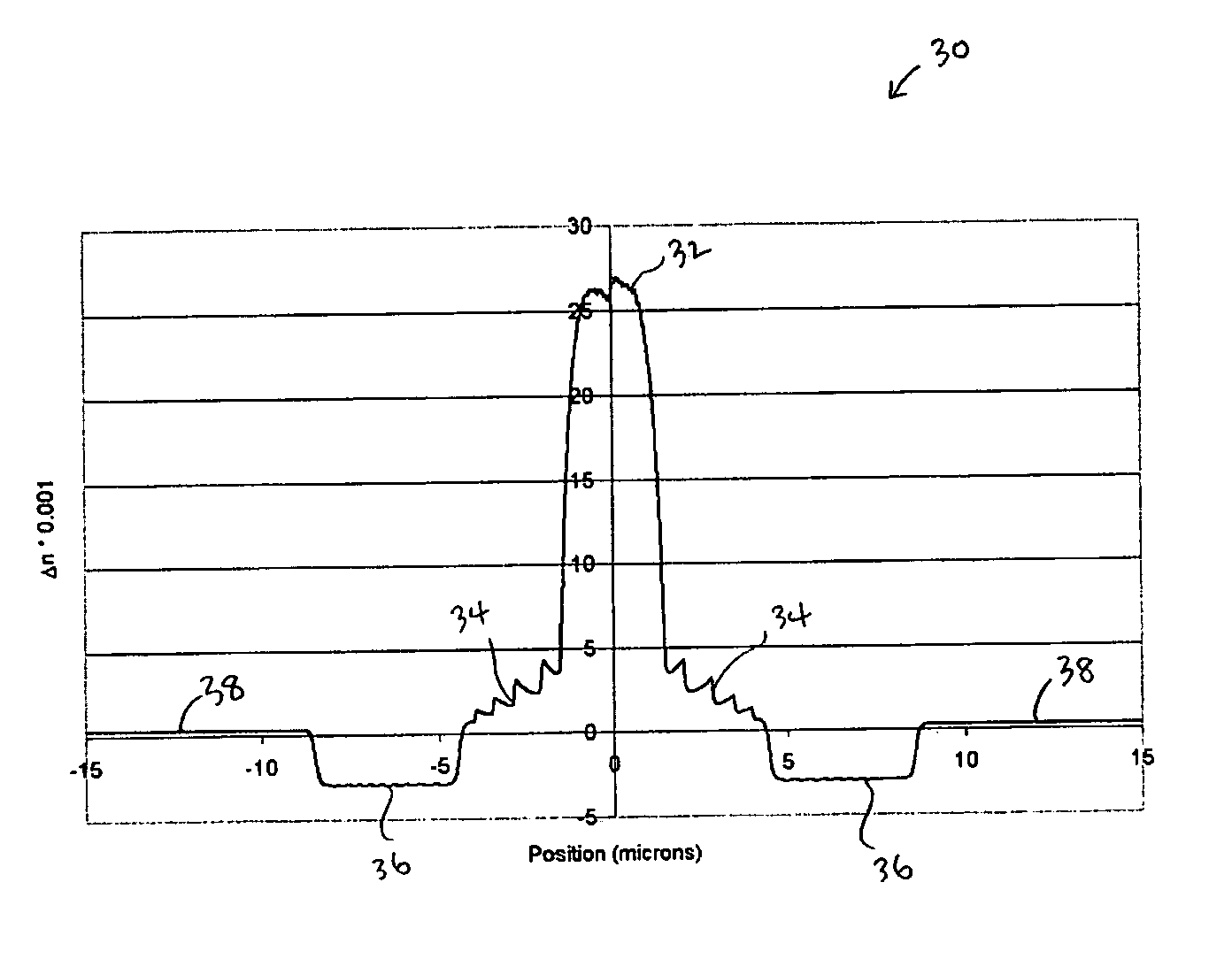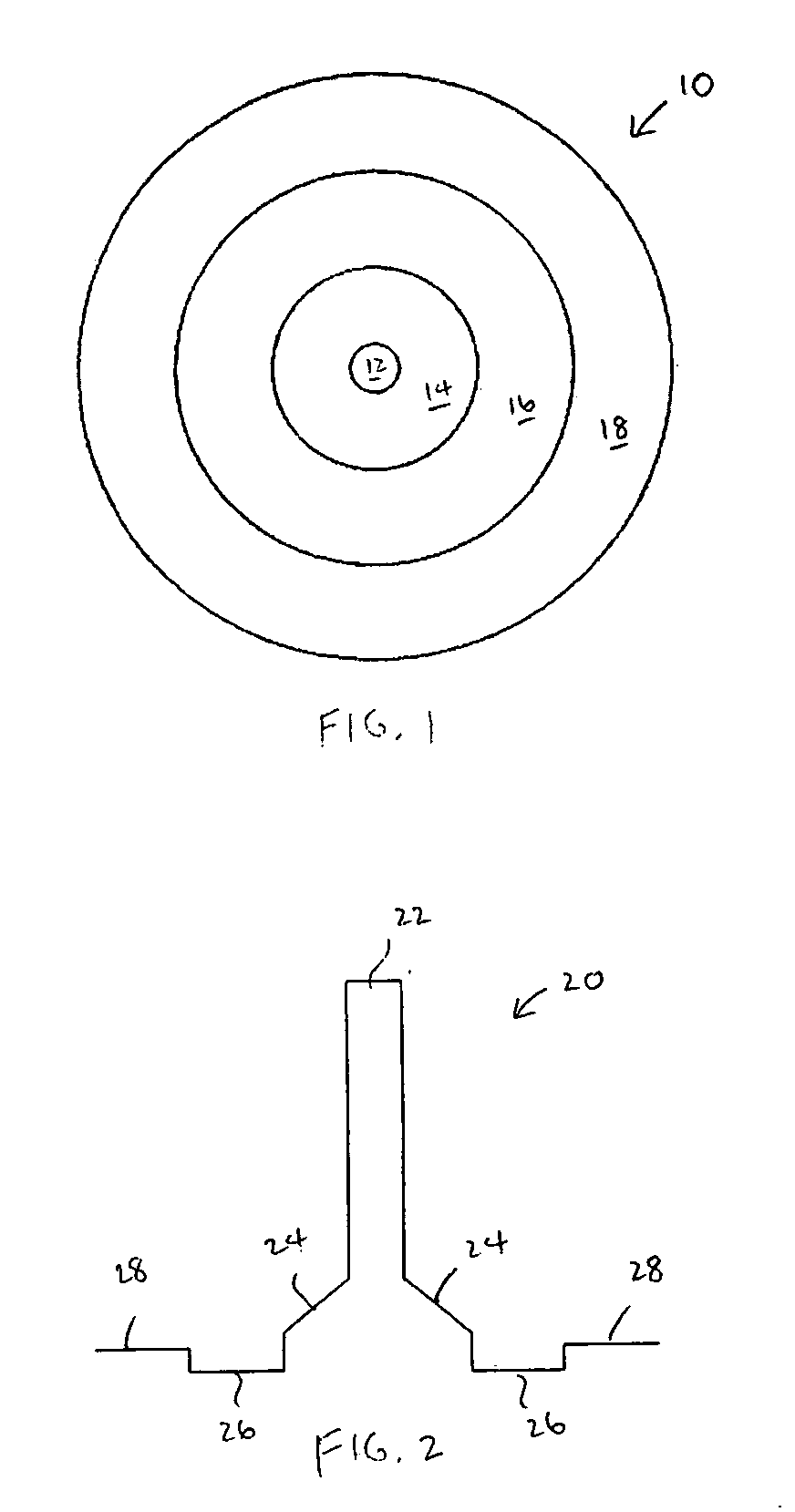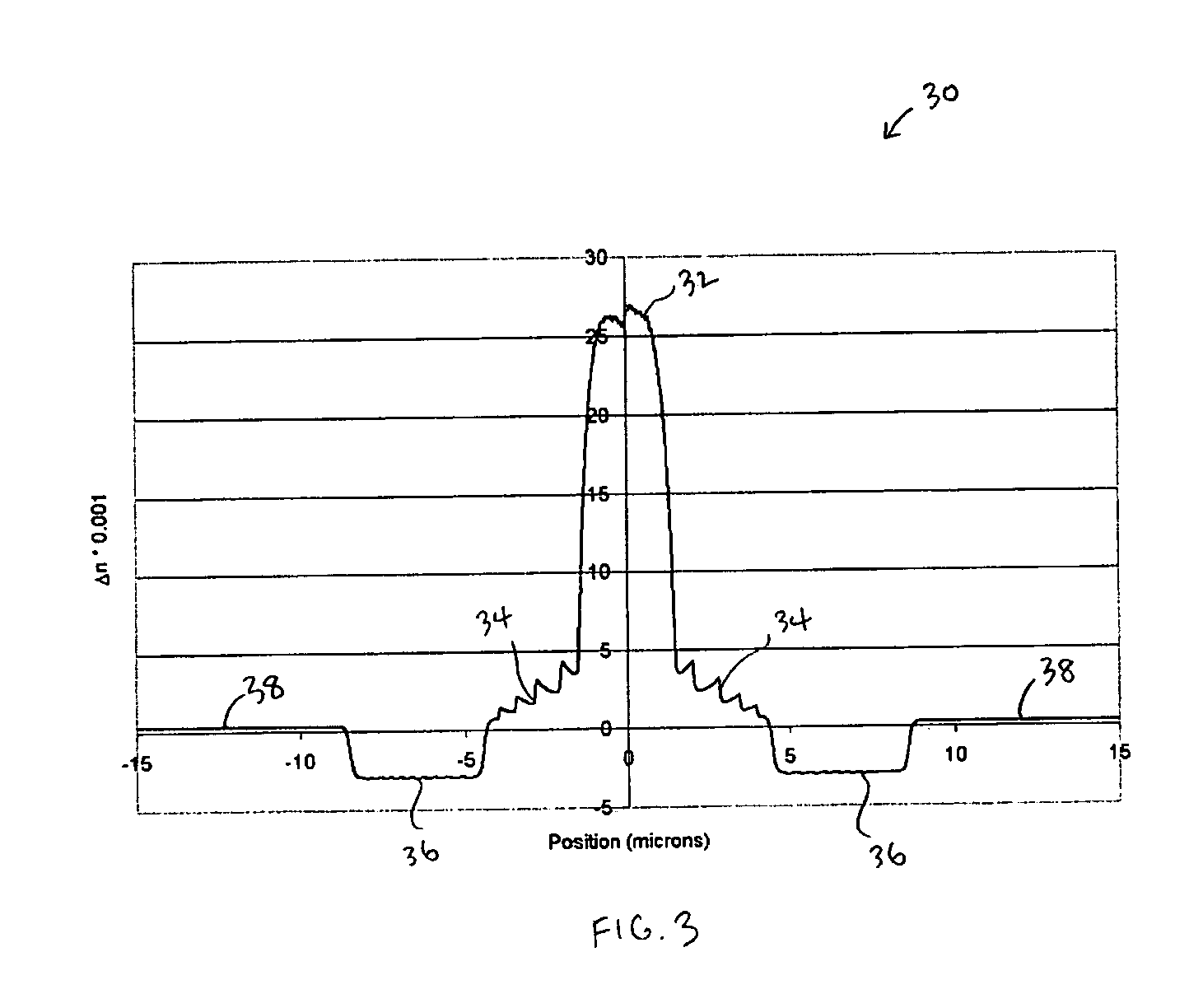Optical fibers with reduced splice loss and methods for making same
a technology of optical fibers and splice loss, applied in the field of optical fibers, can solve the problems of difficult to maintain desired performance, difficult to achieve acceptable performance for edfs, and splice loss typically 0.1-0.2 db, and achieve the effect of reducing the cutoff wavelength and increasing the fiber's refractive index volum
- Summary
- Abstract
- Description
- Claims
- Application Information
AI Technical Summary
Benefits of technology
Problems solved by technology
Method used
Image
Examples
Embodiment Construction
[0022] An optical fiber according to one aspect of the present invention displays reduced splice loss, while maintaining a desired cutoff wavelength. As described further below, such a fiber has a modefield that may be better confined, which in general decreases taper loss when the fiber's modefield diameter (MFD) is expanded during splicing. Although the present invention is described with respect to an erbium doped fiber EDF spliced to a standard single mode fiber (SSMF), the invention may also be used in conjunction with other fibers and splice combinations without departing from the spirit of the present invention. These other fibers and splice combinations include, for example: fibers doped with other dopants, such as thulium (Tm), ytterbium (Yb), neodymium (Nd), and the like; highly non-linear fibers; and intermediate fibers used when manufacturing dispersion compensation modules (DCMs).
[0023] The difficulty in splicing EDF and other types of fiber to SSMF can be understood b...
PUM
| Property | Measurement | Unit |
|---|---|---|
| wavelength | aaaaa | aaaaa |
| wavelength | aaaaa | aaaaa |
| cutoff wavelength | aaaaa | aaaaa |
Abstract
Description
Claims
Application Information
 Login to View More
Login to View More - R&D
- Intellectual Property
- Life Sciences
- Materials
- Tech Scout
- Unparalleled Data Quality
- Higher Quality Content
- 60% Fewer Hallucinations
Browse by: Latest US Patents, China's latest patents, Technical Efficacy Thesaurus, Application Domain, Technology Topic, Popular Technical Reports.
© 2025 PatSnap. All rights reserved.Legal|Privacy policy|Modern Slavery Act Transparency Statement|Sitemap|About US| Contact US: help@patsnap.com



